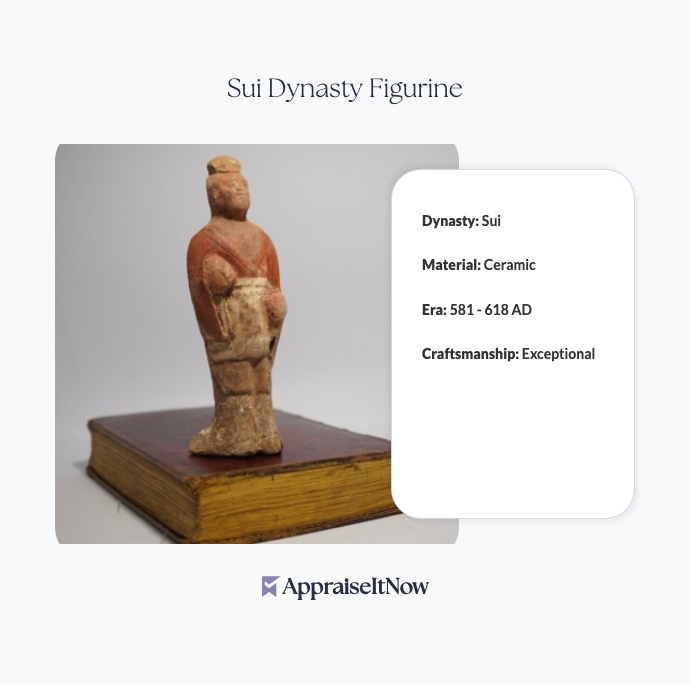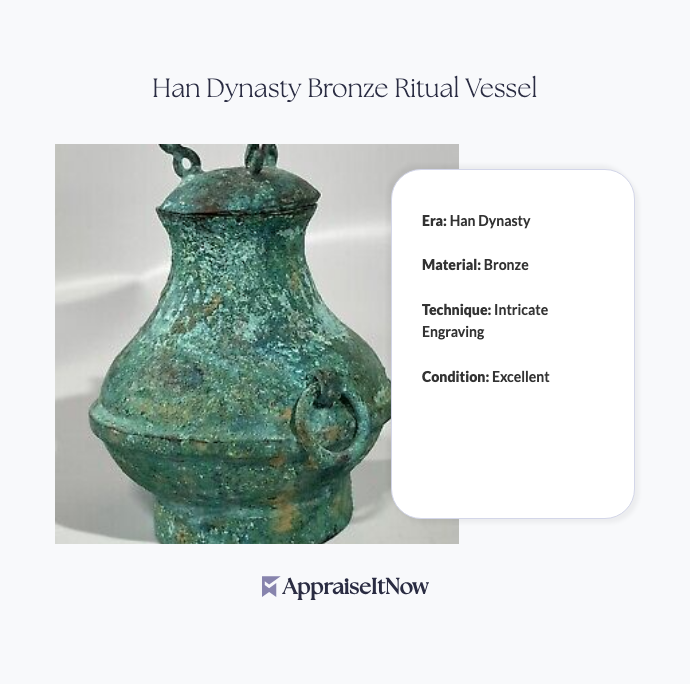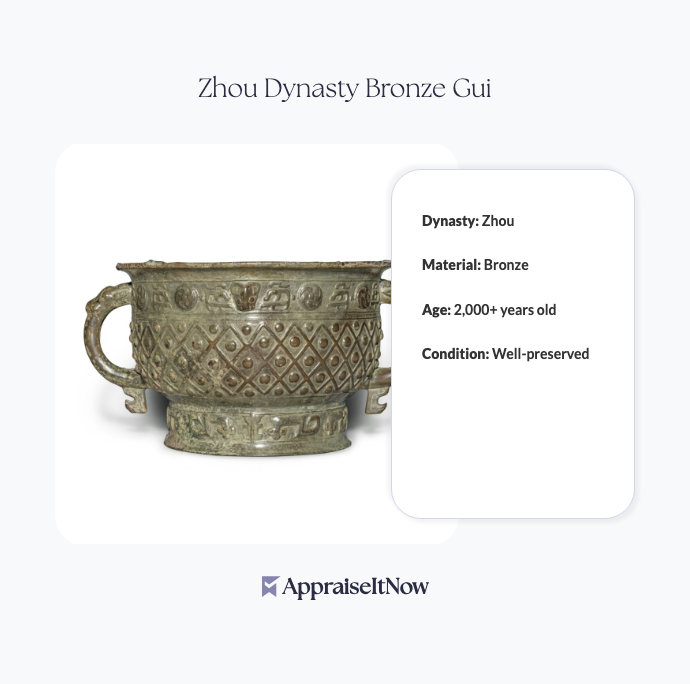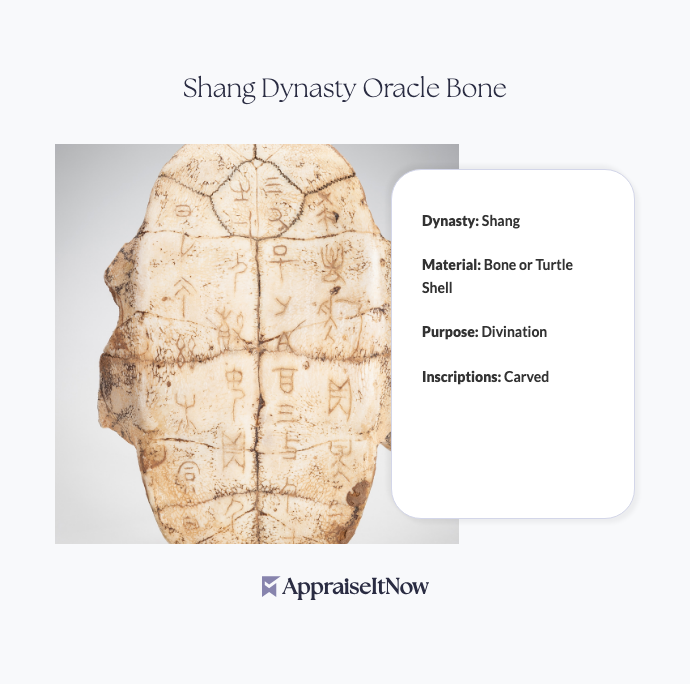<h1>How to Get Your Qing Dynasty Porcelain Famille Rose Vase Appraised</h1>
<p>Qing Dynasty porcelain, particularly pieces featuring the distinctive Famille Rose style, represents some of the most sought-after ceramics in the world today. If you've inherited, purchased, or discovered a Qing Dynasty Famille Rose vase, understanding how to properly appraise this museum-quality piece is essential for insurance, sale, or collection documentation purposes. With estimated values ranging from <strong>$15,000 to $20,000</strong> for exceptional examples, professional appraisal isn't just recommended—it's necessary.</p>
<h2>Understanding Qing Dynasty Porcelain Value</h2>
<p>What is Qing Dynasty porcelain, and why does it command such significant prices? The Qing Dynasty (1644-1912) represents the final imperial era of China, producing some of the world's finest ceramics through exceptional craftsmanship and innovative techniques. Your Famille Rose vase falls within this heritage of excellence, characterized by vibrant pink, green, and gold hues applied through meticulous hand-painting methods developed during the 18th century.</p>
<p>The Famille Rose palette emerged as a revolutionary decorative technique, introducing rose and pink enamels previously unknown in Chinese ceramics. This innovation created visual depth and naturalism that collectors have treasured for centuries. Is Qing Dynasty porcelain valuable? Absolutely—particularly pieces that demonstrate the technical mastery and artistic vision evident in authentic Famille Rose examples.</p>
<div class="callout tip"><p><strong>Collector's Insight</strong></p>
<p>Pieces from the 18th-century height of Famille Rose production typically command higher valuations than later Qing examples due to superior artistry and material quality.</p></div>
<h2>Key Characteristics That Define Famille Rose Worth</h2>
<p>Before seeking professional appraisal, understanding what makes your Famille Rose piece exceptional helps you communicate effectively with appraisers. Famille Rose vases showcase distinctive characteristics that directly influence valuation.</p>
<p>The intricate hand-painted floral designs represent the cornerstone of Famille Rose appeal. Unlike mass-produced ceramics, each authentic piece features unique brush work, pattern variations, and compositional choices reflecting the individual artist's skill. Your vase's graceful, elegant form combined with the vibrant palette of pinks, greens, and golds demonstrates the exceptional craftsmanship that separates museum-quality pieces from ordinary antiques.</p>
<p>How do I identify my Qing Dynasty porcelain? Authentic pieces exhibit several telltale features: the porcelain body displays a pure white base with a smooth, glass-like glaze; hand-painted designs show natural variation and occasional kiln-firing variations; the base typically includes a six-character Qianlong mark or other imperial reign marks indicating production period. How do I identify a Famille Rose? Look for the characteristic soft pink enamels applied over underglaze blue decoration, creating a harmonious visual effect that distinguishes Famille Rose from other Chinese ceramic styles.</p>
<table class='appraisal-table'>
<thead>
<tr>
<th>Feature</th>
<th>What It Indicates</th>
<th>Impact on Value</th>
</tr>
</thead>
<tbody>
<tr>
<td>Six-character Qianlong mark</td>
<td>Imperial reign period (1735-1796)</td>
<td>Significant premium</td>
</tr>
<tr>
<td>Hand-painted variations</td>
<td>Individual artist execution</td>
<td>Increases authenticity</td>
</tr>
<tr>
<td>Underglaze blue with enamel overlay</td>
<td>Proper Famille Rose technique</td>
<td>Higher valuation</td>
</tr>
<tr>
<td>Museum-quality condition</td>
<td>Original glaze and decoration</td>
<td>Maximum market value</td>
</tr>
</tbody>
</table>
<h2>Regional Styles and Market Positioning</h2>
<p>Understanding your vase's production context matters significantly for appraisal. Qing Dynasty porcelain production centered primarily at Jingdezhen, the imperial ceramic center in Jiangxi Province. This location's monopoly on imperial porcelain production means authentic pieces carry substantial historical significance beyond their decorative merit.</p>
<p>Different reign periods produced distinct stylistic variations. Kangxi period examples (1661-1722) pioneered early Famille Rose development, while Yongzheng (1722-1735) and Qianlong (1735-1796) periods represent the pinnacle of technical achievement and artistic sophistication. Your vase's specific characteristics—the palette composition, decorative complexity, and form proportions—help appraisers establish its production period and assign appropriate valuation within the <strong>$15,000 to $20,000</strong> estimated range.</p>
<p>The role of regional styles in determining <a href="/blog/exploring-the-role-of-regional-styles-in-art-appraisals-understanding-local-markets">artwork and antique value</a> extends directly to ceramics. Collectors pay premium prices for pieces demonstrating the refined aesthetics and technical excellence associated with the Qianlong era, when Famille Rose techniques reached their artistic zenith.</p>
<h2>Establishing Provenance and Authentication</h2>
<p>How do I know if my porcelain is valuable? Provenance—the documented ownership history of your piece—plays a crucial role in authentication and valuation. Professional appraisers examine not just the physical object but also its chain of custody, previous collections, and exhibition history.</p>
<p>Authentic Qing Dynasty Famille Rose pieces often carry documentation from reputable previous owners, auction house records, or museum accessions. <a href="/blog/exploring-the-role-of-provenance-in-art-appraisals-assessing-historical-significance">Exploring provenance's role in art appraisals</a> reveals how this documentation directly impacts market positioning. Pieces with clear provenance typically command 15-25% premiums over otherwise identical examples lacking ownership documentation.</p>
<div class="callout note"><p><strong>Authentication Priority</strong></p>
<p>Appraisers examine six-character reign marks, glaze characteristics, decorative technique, form proportions, and material composition to establish authenticity before assigning values.</p></div>
<p>What are the most valuable Chinese porcelain marks? Imperial reign marks—particularly Qianlong, Yongzheng, and Kangxi inscriptions—indicate imperial workshop production and significantly enhance value. However, the mark alone doesn't determine authenticity; skilled appraisers verify marks through comprehensive physical analysis and comparative examination with documented examples.</p>
<h2>Condition Assessment and Value Impact</h2>
<p>The condition of your Famille Rose vase directly influences its appraisal value. Unlike mass-produced ceramics, museum-quality pieces maintain their worth through careful preservation of original glaze, decoration, and structural integrity. Even minor restorations or paint loss can substantially reduce market value.</p>
<p><a href="/blog/the-impact-of-condition-on-artwork-appraisals">Understanding how condition impacts artwork appraisals</a> applies equally to fine ceramics. Professional appraisers evaluate multiple condition factors: the integrity of hand-painted decoration, presence or absence of restoration work, structural stability, and glaze condition. Pieces exhibiting original surfaces and minimal wear command premium valuations within your estimated range.</p>
<p>Restoration history requires transparent disclosure during appraisal. While professional conservation can preserve valuable pieces, the market recognizes original condition as superior. Your appraiser will document any restoration work, understanding that disclosed modifications support honest valuation over misrepresented condition that could expose you to fraud claims during sale or insurance disputes.</p>
<h2>Selecting the Right Appraiser for Fine Ceramics</h2>
<p>How to obtain an accurate appraisals starts with choosing qualified professionals. Your Qing Dynasty Famille Rose vase deserves expertise from appraisers specializing in <a href="/blog/appraisals-for-fine-porcelain-and-ceramics-valuing-delicate-artistry">fine porcelain and ceramics valuation</a> rather than generalist antiques professionals.</p>
<p>Look for appraisers with specific credentials: members of professional organizations like the American Society of Appraisers (ASA), International Society of Appraisers (ISA), or American Association of Appraisers (AAA). These organizations maintain USPAP (Uniform Standards of Professional Appraisal Practice) compliance, ensuring your appraisal meets legal and insurance industry standards. <strong>AppraiseItNow</strong> connects you with credentialed experts across the U.S. who specialize in Asian ceramics and <a href="/blog/appraising-asian-art-and-antiques-understanding-cultural-significance-and-value">Asian art and antiques appraisal</a>.</p>
<p>Your ideal appraiser should demonstrate knowledge of Chinese ceramic history, Famille Rose production techniques, market trends, and comparative sales data. Ask about their experience with imperial porcelain specifically, previous appraisals of similar pieces, and their methodology for establishing fair market value.</p>
<div class="callout tip"><p><strong>Professional Standard</strong></p>
<p>USPAP-compliant appraisals provide detailed condition reports, comparable sales analysis, and clear documentation suitable for insurance claims, estate settlement, or legal proceedings.</p></div>
<h2>Market Comparison and Recent Sales Data</h2>
<p>Understanding current market dynamics helps you appreciate your appraisal results. Qing Dynasty Famille Rose pieces consistently perform well at international auction houses, with exceptional examples exceeding estimates substantially. Recent sales data shows strong collector demand, particularly for pieces demonstrating superior artistic execution and pristine condition.</p>
<p>Comparable sales reveal that Famille Rose vases with documented imperial marks, intricate floral compositions, and museum-quality condition regularly achieve $12,000 to $25,000 at auction. Your estimated <strong>$15,000 to $20,000</strong> range reflects current market values for pieces demonstrating the exquisite craftsmanship and artistic merit characteristic of peak Qianlong-period production.</p>
<p>The broader <a href="/types/memorabilia-and-collectibles">memorabilia and collectibles</a> market shows consistent appreciation for authenticated Asian ceramics, particularly those with clear provenance and excellent condition. As global wealth expands and collector interest in Asian cultural heritage increases, values for quality pieces continue appreciating steadily.</p>
<h2>Documentation and Insurance Requirements</h2>
<p>Professional appraisals serve critical purposes beyond establishing purchase or sale price. You'll need detailed, certified documentation for insurance coverage, estate planning, auction house submission, or donation purposes. <strong>AppraiseItNow</strong> provides comprehensive appraisal reports including high-resolution photographs, condition assessment, historical context, comparable sales analysis, and fair market value determination.</p>
<p>Insurance companies require USPAP-compliant appraisals from credentialed appraisers to establish agreed-upon value coverage. This documentation ensures your Famille Rose vase receives appropriate coverage reflecting its true market value, protecting your investment against loss, theft, or damage. When circumstances change—values fluctuate, markets shift, or estates require settlement—updated appraisals maintain accurate coverage.</p>
<p>Documentation also protects you during sale transactions. Potential buyers gain confidence from professional appraisals, understanding that your valuation reflects objective analysis rather than inflated asking prices. This transparent approach supports fair pricing, faster transactions, and confidence for all parties involved.</p>
<hr />
<div class="callout note"><p><strong>Key Takeaway</strong></p>
<p>A certified appraisal from qualified professionals transforms your Qing Dynasty Famille Rose vase from a treasured family heirloom into a properly documented, insured, and valued asset. Whether you're planning to sell, establishing insurance coverage, or preserving heritage documentation for future generations, professional appraisal expertise ensures your piece receives the authentication and recognition it deserves, with values in the <strong>$15,000 to $20,000</strong> range reflecting its museum-quality artistry and historical significance.</p></div>







.avif)







